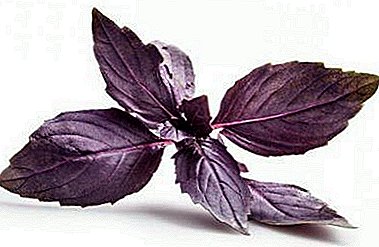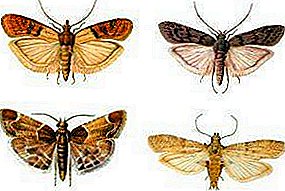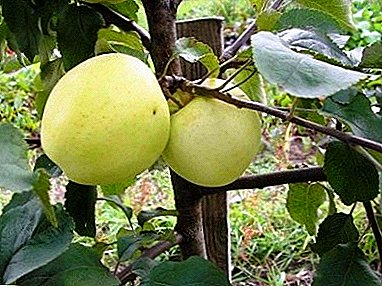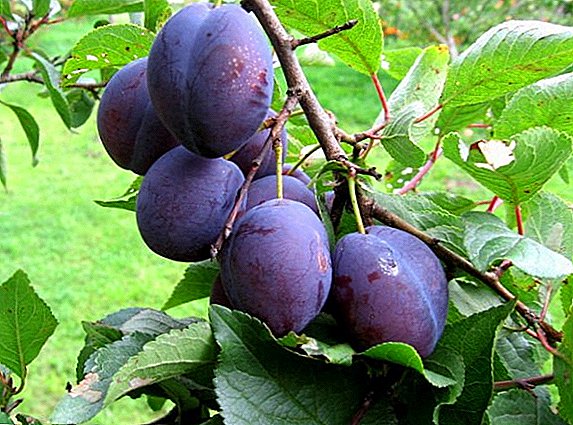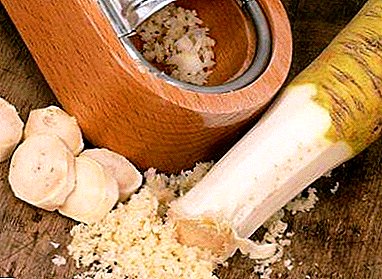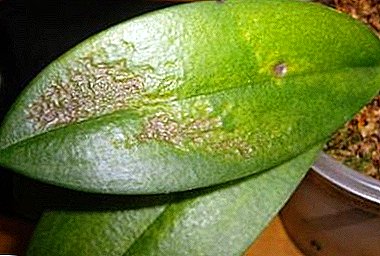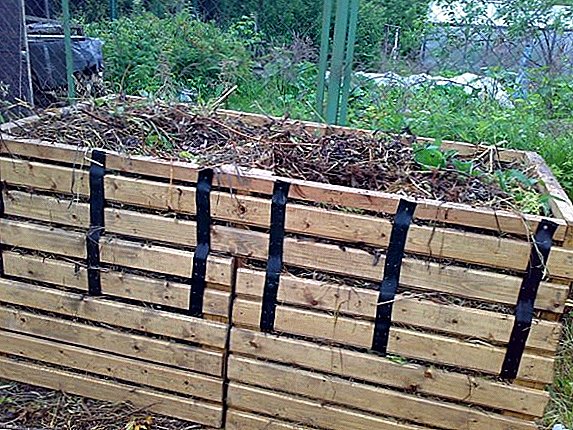
There are more than 200 species of hibiscus. Most of them are wild. However, domesticated species provide the gardener with many different possibilities for decorating his plot.
In this article we will look at the hibiscus Fireball, which for its magnificence and beautiful appearance was called the flower of love. We learn how to propagate this plant, as well as how to properly care for it. See also the photo of the plant.
Botanical description
Hibiscus Fireball (Hibiscus herbaceous) - a perennial plant that is resistant to 30 degrees of frostbelonging to the malvaceae family. Other plant names are herbaceous or hybrid hibiscus.
Bred by breeding three North American hibiscus species:
- red (Hibiscus coccineus);
- pink (Hibiscus moscheutos);
- holly (Hibiscus militaris).
Appearance
The plant has an upright powerful trunk and can reach a height of 2.5 m. Leafiness is not thick, due to the larger size of leaves and flowers. Foliage is a bit like sunflower leaves.
Flowers come in different shades from white to red. One flower can have a diameter of up to 30 cm, which is about 2 palms. Usually has 5 petals overlapping each other. The plant blooms surprisingly long, given the fact that each blooming flower blooms only one day. After flowering, the seeds remain in the boxes.
A photo
Here you can see a photo of hibiscus Fireball.





History of
Hibiscus Fireball is thermophilic and not indifferent to moisture. In the culture introduced Kiev Botanical Gardens them. Grishko in 1965. Supervised the breeding of Academician Rusanov in the Botanical Garden of the Academy of Sciences of the Ukrainian SSR.
Attempts were made to multiply the flowering time of the plant by breeding one of the botanical garden staff - V.G. Zhegolevoy. However, she failed to achieve this.
Another fact is that most hybrid hibiscus do not form seeds. Therefore, you need to select parental pairs and include in the selection of hibiscus Bolotniy. The absence of seed propagation does not interfere with the normal vegetative reproduction of these plants.
Geography habitat
Fireball is a plant that can be grown almost everywhere. and in any soil. Its ability to withstand 30 degrees of frost is perfect for cold regions, as well as hibiscus tolerates drought, but standing water has a bad effect on it.
Care
Even unpretentious plants have the rules of planting and care, they help to get a stronger and more beautiful plant.
- Temperature. Although the flower can tolerate severe frosts, the optimum temperature for growth is 20-25 ºС.
- Watering. Likes spraying water, it is better to carry out the procedure in the morning or in the evening, when the sun is not very hot. It is held when the earth is dry. If the weather is too hot, then you need to water it once a day. It is recommended to add organic fertilizers to water, and mineral fertilizers during budding.
- Shine. This plant is light-loving, so it is recommended to plant it on a warm, well-lit part of your garden. In the first days after transplantation, it is better to cover the plant from direct sunlight.
- Priming. Any loose garden soil will do, but in order for the plant to grow more powerful and healthy, it is recommended to add rotted needles to the ground, and to mulch with straw. It grows poorly on calcareous soils.
Attention! Mulching eliminates the loosening of the soil after watering, which is very important, since its root system is very close to the surface.
- Crop. Pruning is carried out to shape the bush or to enhance branching.
- The instrument must be sharply sharpened, so as not to make torn sections, disinfected.
- Removed all the old, weak, dead branches.
- Shoots are cut over the kidney.
- To shape the plant you need to pinch the tops of young shoots.
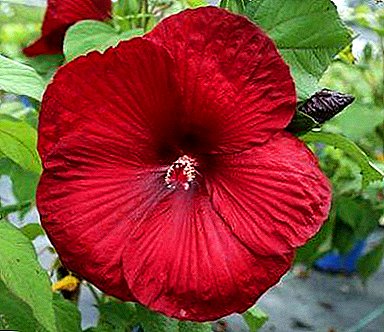 Feeding. Hibiscus responds well to supplements, especially during the growing season. During this period, it is fed with phosphate and nitrogen fertilizers once every two weeks. To prepare for the winter, before the onset of cold weather, potash supplements are used.
Feeding. Hibiscus responds well to supplements, especially during the growing season. During this period, it is fed with phosphate and nitrogen fertilizers once every two weeks. To prepare for the winter, before the onset of cold weather, potash supplements are used.- Transfer. In the spring, it is carried out when the shoots grow to a height of 10 cm. If a higher flower is replanted, it will take a long time to take root.
For transplant:
- Prepare a hole, the size of the root system of the plant.
- Make good, nutritious drainage.
- A broken brick is laid on the bottom, sand - 10 cm, compost - 12 cm, and again 10 cm of sand.
- Place the root ball in the hole, so that the root neck is slightly underground.
The plant can be kept in one place for 3-4 years, then it should be transplanted and dividing the bush.
Wintering
It is recommended to exclude potash fertilizers already in the second half of the summer. In the second decade of November, the bush stops its flowering and begins to prepare for wintering. During this period, the plant should sting and add sand to it. For wintering, the plant is pruned as a bush rose, leaving a little above-ground part and covering it with spruce branches in 3 layers, tying and wrapping with a sacking branch.
Landing
Hibiscus can be propagated in several ways:
- Seeds.
- Cuttings.
Seeds
This method is not considered the fastest., because if you plant seeds in open ground to a depth of 1-2 cm, the plant will begin to bloom only after 3-4 years.
However, there is another method of propagation by seeds, thanks to which the plant can bloom by the end of this summer. For this you need to sow the seeds in the greenhouse and germinate (for growing the necessary temperature 25-27 ºC).
 Instruction:
Instruction:
- Soak the seeds for about half a day in a growth promoter.
- Wrap the seeds in a wet, warm cloth and place them in a bag, but do not forget to air and moisten them from time to time until sprouts appear.
- In a prepared cup with a mixture of peat and sand, plant separately the shoots.
- Already small plants (having 2-3 leaves) are transplanted into a large pot.
- In the second decade of May, seedlings are planted in open ground, at a distance of 1m.
Cuttings
In the summer it is necessary to prune cuttings from the tops of new shoots.having 2-3 internodes. Rooting is carried out at a temperature of 22-25 C in a container with water or a substrate. About a month later, the first roots will appear - a sign that the young plant can be transplanted into open soil.
Diseases and pests
- Most often, hibiscus fireballs can attack aphid, spider mite or whitefly. To help the flower use: aktar, aktopit, vermitek and other insecticides. Also used folk remedy - tincture of garlic peels with soap.
- Hibiscus can suffer from leaf chlorosis - due to improper care, the leaves turn yellow and fall off. Treat with iron chelate solution.
Similar flowers
- Hibiscus marsh.
- Syrian hibiscus.
- Hibiscus arnotti.
- Magnolia.
- Plumeria.
In this article, we reviewed the basic rules for the care of hibiscus fierball. Let this flower be a wonderful decoration for your garden for a long time.


 Feeding. Hibiscus responds well to supplements, especially during the growing season. During this period, it is fed with phosphate and nitrogen fertilizers once every two weeks. To prepare for the winter, before the onset of cold weather, potash supplements are used.
Feeding. Hibiscus responds well to supplements, especially during the growing season. During this period, it is fed with phosphate and nitrogen fertilizers once every two weeks. To prepare for the winter, before the onset of cold weather, potash supplements are used.